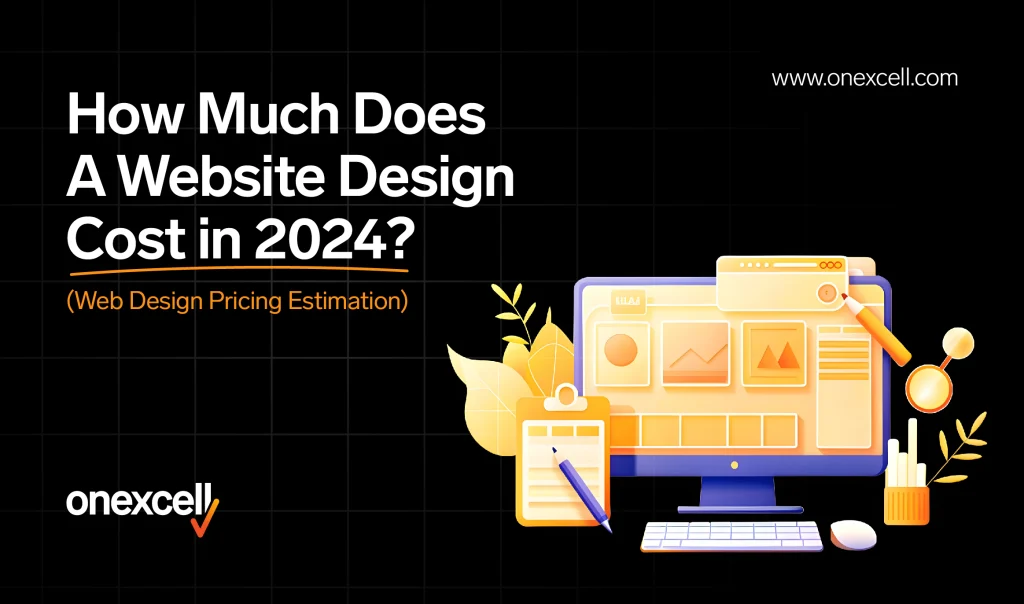Eight seconds. That’s all it takes for users to decide whether they want to stay on your site, or leave it for good.
This is precisely why investing in web design can be the difference between success and failure.
Having a visually appealing and user-friendly website keeps visitors around longer, giving you more opportunities to convert them.
If you’re building a new site for your startup or small biz, you might wonder, ”How much does it cost to design a website in the UK?”
Well, it depends on various factors. Let’s explore them in this article.
How Much Does a Website Design Cost in the UK?
Website design cost varies depending on the scale and complexity of your website. Here’s a breakdown to help you understand what to expect.
| Business size | Cost |
Small Business Website 8-16 pages | £1,000 – £2,500 |
Medium-Sized Business Website 25-75 pages | £5,000 – £15,000 |
Large Enterprise Website 75+ pages | £15,000 and up |
Small business websites
For small businesses, the average cost for website design typically ranges between £1,000 and £2,500.
This price usually covers a simple site with a few pages, basic functionality, and essential features. If you’re considering a website redesign, the price may be on the lower end of this range.
Medium-sized business websites
Medium-sized businesses can expect to pay between £5,000 and £15,000 for a new website or redesign.
At this level, the average web design cost includes more pages, advanced features, and a higher level of customisation.
Keep in mind that the website redesign cost may vary depending on the specific requirements and the existing structure of your site.
Enterprise-level websites
For large enterprises, the cost can start from £15,000 and go up significantly depending on the complexity and scale of the project.
These websites often require custom development, integration with various systems, and advanced features, which all contribute to the higher website redesign price.
It’s also worth noting that there can be regional differences in pricing within the UK.
For example, website design services in London may be more expensive compared to Liverpool due to higher operating costs.
However, the cost for website design across the UK generally remains consistent, with only slight variations based on location.
Factors that Affect Web Design Pricing in 2024
When planning a website design in 2024, several factors can influence the pricing. Here’s what you should keep in mind:
1. Personalised Features
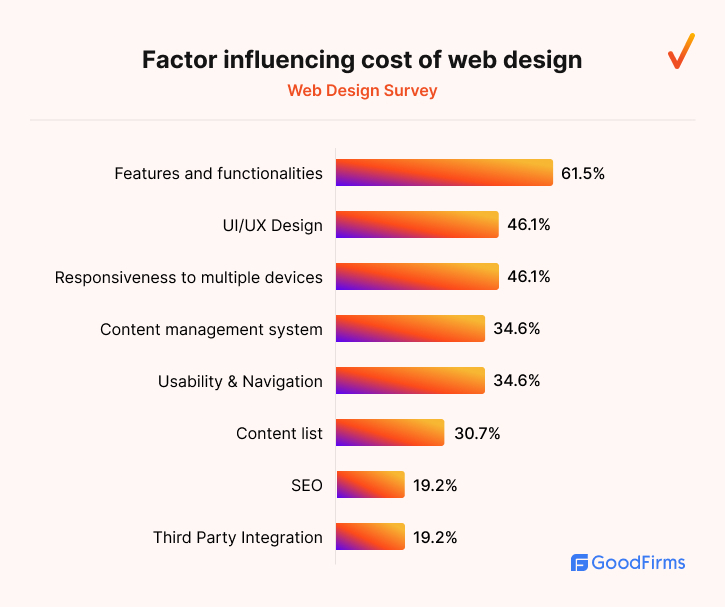
According to a survey by GoodFirms, 61.5% of web designers believe that functionality is the most significant factor influencing the cost of web design.
Developing complex features like custom user dashboards, advanced filtering options, or unique interactive elements typically require more development time and expertise, leading to higher costs.
Naturally, you will have to spend more money creating a custom website, compared to using ready-to-use templates.
The more personalised and complex these features are, the greater their impact on the final price of the project.
2. User Interface/User Experience (UI/UX)
People ignore design that ignores people
Frank Chimero Designer

Industry-specific trends also play a significant role in web design pricing. In 2024, minimalistic flat design and expressive typography are key trends shaping web design.
A minimalistic flat design focuses on simplicity, using clean lines, limited colour palettes, and fewer elements.
This approach often reduces the time needed for design but requires a keen eye for detail, which can influence costs.
On the other hand, expressive typography, which involves using bold and unique fonts to convey brand personality, can add to the overall expense due to the need for custom typefaces and precise implementation.
Another trend that continues to impact pricing is the demand for dark mode.
Dark mode is now a standard feature that requires additional design work to ensure compatibility and aesthetic appeal across various devices.
The complexity of designing both light and dark modes can increase the overall cost of the project.
Additionally, search engines like Google prioritise mobile-friendly websites more these days.
So, if you want to keep your site competitive, you might have to spend more on responsive design.
3. Content Management System (CMS)
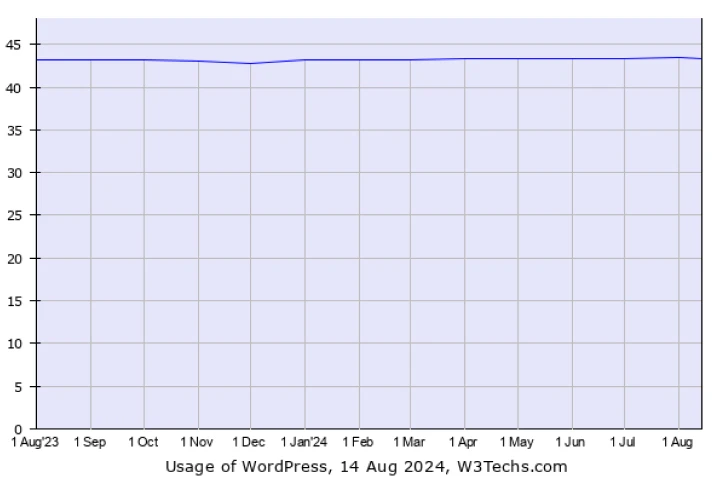
A CMS is the backbone of your website, allowing you to manage and update content without needing technical expertise.
Using a popular CMS like WordPress can often be more cost-effective than hiring a web developer.
WordPress offers a wide range of themes and plugins that can be easily customised to suit your needs, reducing the need for extensive development work.
However, if your project requires a more complex or custom CMS, the costs can rise substantially.
Custom CMS solutions are often designed from the ground up to meet specific business needs, offering greater flexibility and control.
This bespoke approach demands more development time, specialised skills, and ongoing support, all of which contribute to higher costs.
Furthermore, integrating a custom CMS with other systems, such as eCommerce platforms or customer relationship management (CRM) tools, can further increase the overall expense.
4. Usability and Navigation
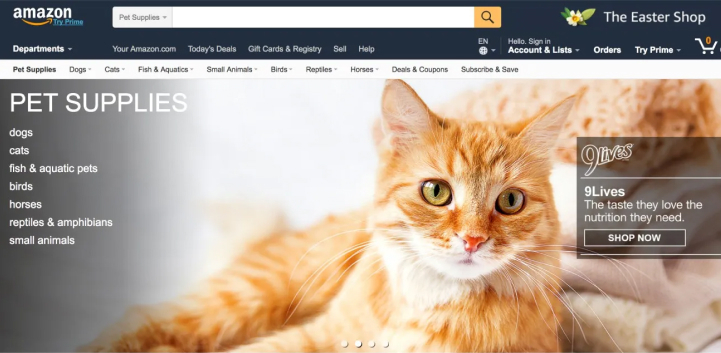
Basic usability and navigation typically involve creating a clear site structure, intuitive menus, and straightforward user paths.
These elements usually require less development time and can be implemented within a standard budget.
But if your site requires more sophisticated usability and navigation features, expect to dig deeper into your pocket.
For instance, using horizontal scrolling, animated transitions, or dynamic menus that adapt as users interact with the site can help you deliver a better experience.
However, these interactive elements require additional design and development work, which increases the overall cost.
Another example is drag interaction, a trend where users can drag elements on the screen to interact with the content, such as rearranging items or exploring different sections of a website.
This feature requires complex coding and thorough testing to ensure it works smoothly across all devices and browsers. It needs more development time and expertise and generally will raise the price of the project.
Cost of Design by Website Types
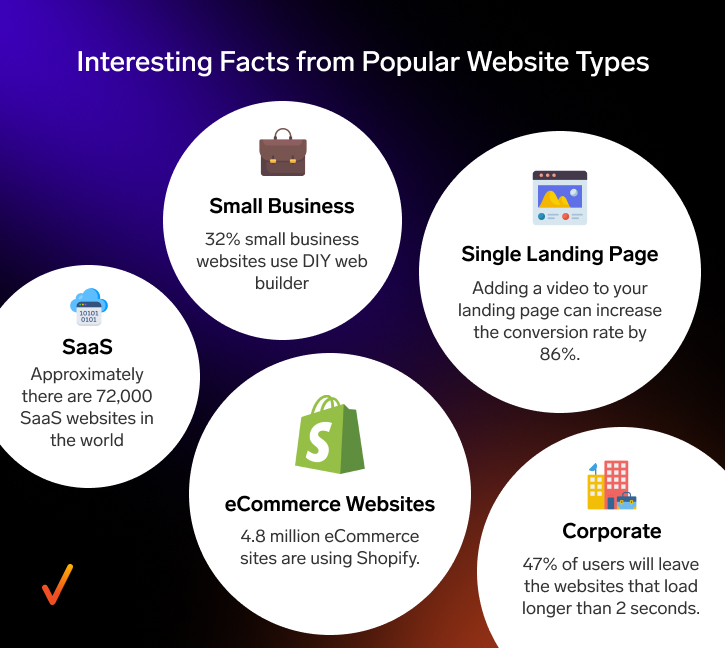
The website design rates can differ significantly based on the types of the sites.
Below, we’ll break down the costs associated with different types of websites and each example.
1. eCommerce Website
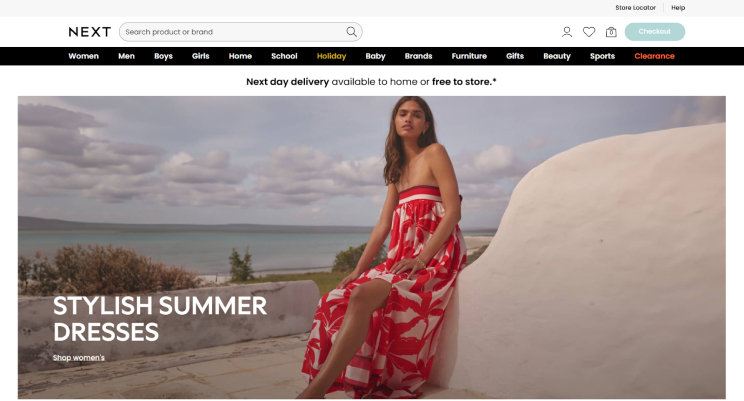
Next is a prime example of a comprehensive and complex eCommerce platform, designed to cater to a global audience.
As an international online shop, Next handles transactions across multiple countries and offers various payment options.
The site is highly customised, featuring an extensive product range with advanced search functionalities that allow users to quickly find what they’re looking for.
It also integrates seamlessly with inventory management systems, ensuring that stock levels are accurately reflected in real time.
These features make the website not only user-friendly but also highly efficient in managing large volumes of products and transactions.
In addition to its robust functionality, Next’s website is fully responsive, providing a seamless shopping experience across all devices.
Given the complexity of these features, the ecommerce website design price for a site like Next could start from £5,000 and increase significantly depending on the specific requirements.
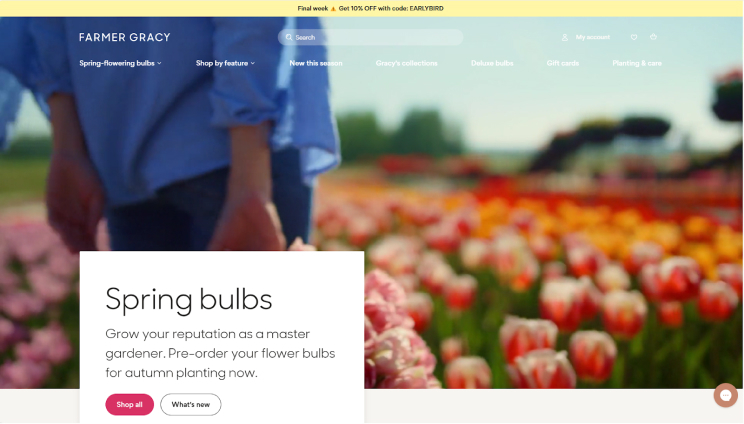
On the other hand, a simpler yet still effective e-commerce platform like Farmer Gracy offers a more cost-efficient alternative.
Farmer Gracy uses a Shopify theme, which is less complex than a fully custom-built site like Next, but still provides essential e-commerce features.
Despite its simplicity, the website supports multiple currencies and boasts an aesthetically pleasing design.
For this advanced look and functionality, the Shopify website design cost would typically start around £2,500, making it a more affordable option for businesses with less complex needs.
2. Corporate Website
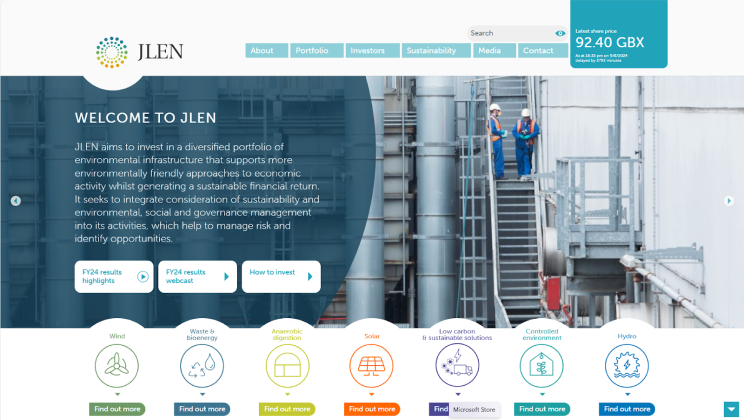
Jlen.com is an excellent example of how a well-executed corporate website design effectively conveys a brand’s identity while maintaining functionality and aesthetics.
As an environmental infrastructure investment fund, JLEN’s website reflects its brand values, with a clean and professional design that aligns with its focus on sustainability and responsible investing.
The website avoids excessive graphics that could slow down loading times, ensuring a smooth and efficient user experience.
Instead, it uses a minimalist approach, featuring carefully selected images and concise content.
For a customised corporate website like Jlen.com, where the design is thoughtfully aligned with the brand identity and optimised for performance, the cost typically starts from £1,000.
3. Small Business Website
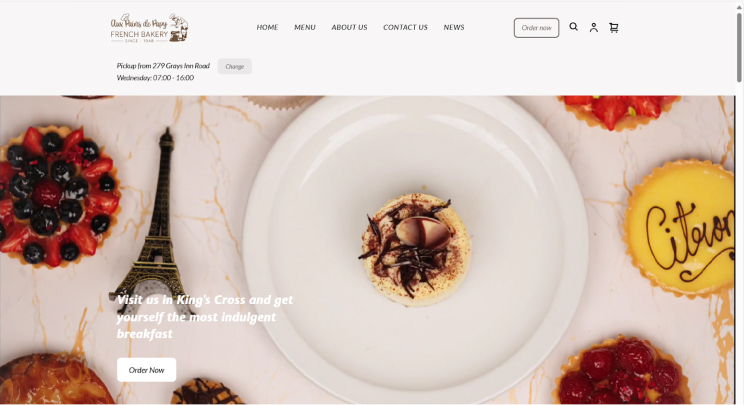
Aux Pains de Papy, a charming French family bakery in London, has a beautifully crafted website built with Weebly—a smart choice for small businesses looking to establish an online presence without breaking the bank.
While the website has limited features compared to more complex platforms, it’s perfectly suited for showcasing the bakery’s offerings and engaging with customers.
This approach keeps costs down, with the average cost of website design for small business like this being approximately £250.
4. Single Landing Page
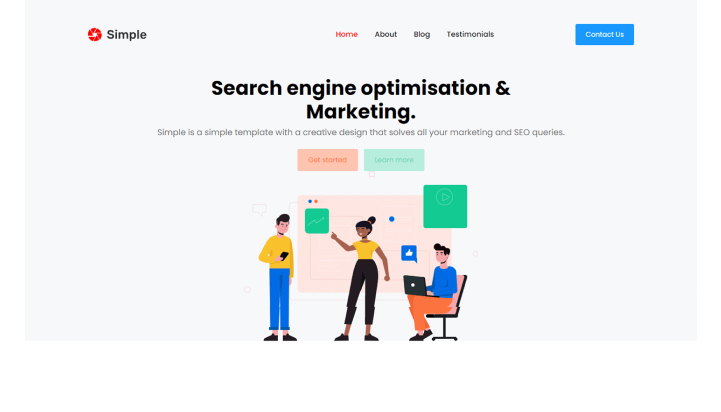
Boostly effectively uses a single landing page to capture and engage with the audience.
The page features a clean layout with ample white space and clearly defined sections in different colours, making it easy for visitors to navigate and focus on the key messages.
Visual elements are strategically placed, including photos and a video, which not only enhance the page’s appeal but also keep users engaged.
The main headline is particularly powerful. It speaks directly to Boostly’s readers, encouraging them to reflect on their current situation and consider if they need a change.
This approach is highly effective, as it prompts potential customers to assess their own needs and challenges.
You can apply a similar strategy by using a question-based headline that addresses a specific pain point or gauges your audience’s motivation to achieve their desired outcome.For a single landing page that has stunning visual elements, it costs around £350.
5. SaaS Website
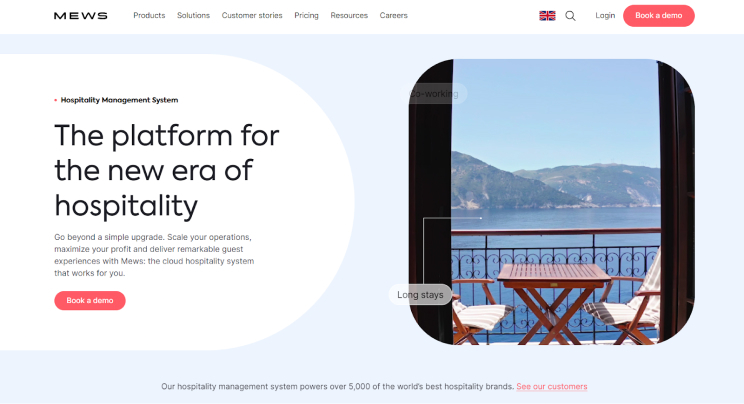
Mews provides a great reference of how a well-designed SaaS website caters to its target audience while maintaining a clean and visually engaging layout.
The website is thoughtfully designed, providing a user-friendly experience with clear navigation and strategic visual elements like videos that keep visitors engaged.
One of the key strengths of the Mews website is its focus on the audience. It offers tailored choices for different types of businesses, such as hotels, hostels, and serviced apartments.
Moreover, the fact that hoteliers build the platform further enhances its reliability, as it’s designed with firsthand industry knowledge and expertise.The cost to develop a similar website could range from £5,000 to £20,000 or more, depending on the complexity and specific features required.
Cost of Designing Website by Your Own (DIY)
Designing a website on your own (DIY) can be a cost-effective solution, but it’s important to consider the web builder, time, and effort involved.
Here are the custom website design cost using three popular web builders:
Wix
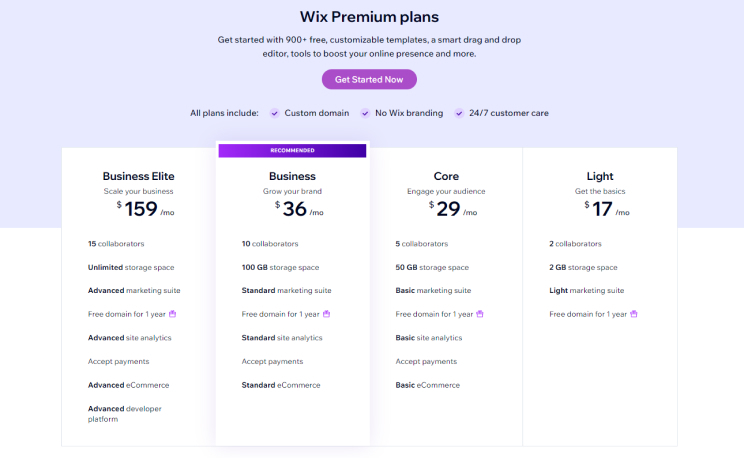
Wix is ideal for small businesses and online stores. It offers a wide range of features, including both commerce and marketing tools, making it a strong choice for various industries.
Pricing starts from $17 per month, providing a solid foundation for a successful business website.
Weebly
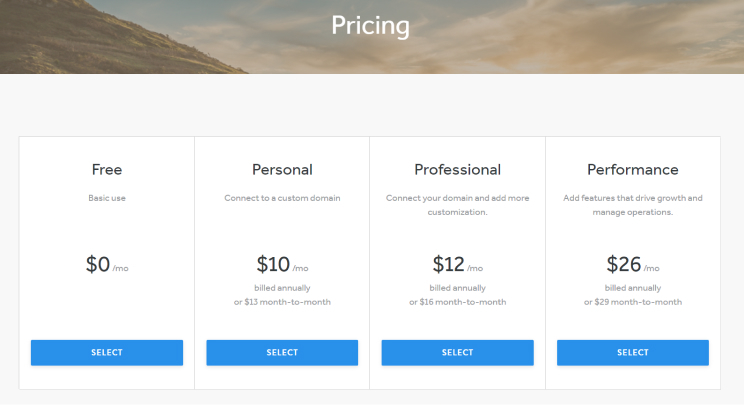
Weebly is a budget-friendly option, especially for those looking to sell products online for free.
While it doesn’t offer as many features or as much creative freedom as other platforms, its lower pricing and ability to sell for free make it a great choice for those on a tight budget.
Pricing starts from $10 per month.
Squarespace
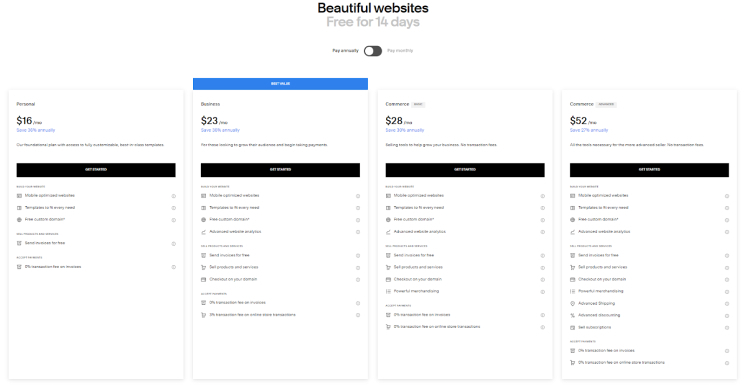
Squarespace is perfect for selling and advertising art online.
Known for its stunning templates and user-friendly editor, Squarespace allows you to put a creative, personal stamp on your website.
Starting from $16 per month, Squarespace is an excellent option for creatives who want a visually appealing site without hassle.
While the upfront costs are lower, it’s important to consider the potential trade-offs in terms of functionality and professional quality.
Some of the cons you need to consider when using web builder:
- Learning curve: While these platforms are user-friendly, there is still a learning curve. You’ll need to spend time familiarising yourself with the tools, templates, and features.
- Design skills: Although they provide templates, having an eye for design helps. Otherwise, your site may look generic or unprofessional.
- Functionality limitations: DIY platforms may not offer the advanced features that a custom-designed website would, limiting your ability to fully customise your site or add unique functionalities.
- Ongoing maintenance: You’ll be responsible for updating and maintaining the website, which can be time-consuming.
- Risk of errors: Without professional guidance, you might encounter errors or issues that could impact your site’s performance or user experience.
How Much Does a Bespoke Website Cost in the UK?
Bespoke website design is all about creating a site that’s specific to fit your specific needs and brand identity.
Unlike template-based designs, bespoke websites are custom-built from the scratch, offering you complete control over every aspect of your site.
Businesses that want to stand out from the competition, such as high-end retailers, luxury brands, or companies with unique requirements typically have these kinds of websites.
Put simply, you get a website that’s perfectly aligned with your business goals.
In the UK, the cost of a bespoke website design generally ranges from £3,000 to £10,000, depending on the complexity and specific needs of your project.
While this is a significant investment, it’s one that can pay off by giving you a powerful, unique online presence that drives your business forward.
DIY vs. Professional Web Design
Still considering which is the best for your business? Take a moment to learn these comparison table:
| Feature | DIY Web Design | Professional Web Design |
| Cost | Generally lower upfront cost. May involve subscription fees or website design packages. | Higher upfront cost. Typically use hourly freelance website designer rates or company pricing. |
| Control | Full creative control over the design and development process. | Less direct control, but professional guidance and expertise throughout the project. |
| Time Investment | Significant time commitment required to learn design principles, coding, and website development. | Faster turnaround time as professionals handle the design and development. |
| Technical Skills | Requires technical skills in design software, coding languages (HTML, CSS, JavaScript), and website development platforms. | No technical skills required from the client. Professionals handle all technical aspects. |
| Customisation | Limited customisation options depending on the chosen website builder or design software. | High degree of customisation to specific business needs and brand identity. |
| SEO Optimisation | Basic SEO optimisation may be possible, but advanced techniques require additional knowledge and effort. | Professionals implement best practices for SEO optimisation to improve search engine rankings. |
| Scalability | May face limitations in scaling the website as business needs grow. | Designed with scalability in mind to accommodate future growth and expansion. |
| Professionalism | May lack the polished and professional look of a custom-designed website. | Delivers a high-quality, professional website that reflects the brand’s image. |
Additional Costs to Consider
When budgeting for web design, it’s important to consider additional costs beyond the initial design phase.
Ongoing Maintenance and Updates
Websites require regular maintenance to stay secure and up to date. This includes software updates, security patches, and content changes.
Depending on the complexity of your site, ongoing maintenance can range from £50 to several hundred pounds per month.
Domain and Hosting
Web hosting is a service that hosts your website, making it accessible to internet users. While domain name is the address people use to visit your site, like onexcell.co.uk.
A domain name typically costs around £10 to £20 per year. For web hosting, expect to spend between £5 to £30 per month, depending on your chosen provider and hosting plan.
SEO and Marketing Services
For your website to attract visitors, you’ll need to invest in SEO (search engine optimisation) tools and marketing integration.
These tools help you perform tasks like researching keywords, writing high-quality content, and linking your site to social media platforms.
Luckily, some WordPress plugins like Yoast SEO and AIOSEO offer free versions that are powerful enough for basic SEO needs.
If you prefer hiring a digital marketing agency to handle your marketing campaigns, you will have to spend a few hundred to several thousand pounds, depending on the level of service and expertise required.
How Much Time Does it Take to Design a Website in the UK?
Now that we’ve explored the factors influencing website design costs, let’s shift our focus to another crucial aspect: the timeline.
So, how much time does it typically take to design a website in the UK?
| Type of Website | Average Time | Example |
| Simple Website | 4-8 weeks | Brochure site, single landing page, personal website |
| Medium Complexity Website | 8-12 weeks | Small business, Corporate |
| Complex Website | 12+ weeks | eCommerce Website, SaaS website |
Questions to Ask Potential Agencies
Here are some questions that you should ask web design agencies to get a clear understanding of the project, the costs involved, and to ensure it’s the right fit.
Questions about the project
- Can you walk me through your design process?
- Can you share examples of similar websites you’ve designed?
- What is your estimated timeline for the project?
- What is your approach to search engine optimisation?
Questions about the cost
- Can you provide a detailed breakdown of the costs involved?
- What is included in the initial quote, and what are potential additional costs?
- What is your policy on revisions and changes?
Questions about after-launch:
- How do you ensure the website is responsive across different devices?
- How do you approach website security and maintenance?
- What is your after-launch support policy?
Choosing a Web Design Agency in the UK
When you’re looking for a web design agency in the UK, there are a few key things to consider:
- Experience: You want an agency with a proven track record. How long have they been in business? What kind of projects have they worked on? An experienced agency will have the knowledge and skills to handle your project, no matter how big or small.
- Portfolio: Check out the agency’s portfolio to get a feel for their style and capabilities. Do you like the look and feel of the websites they’ve created? Are they user-friendly and easy to navigate? A good portfolio will give you a sense of what the agency can do for you.
- Reviews: What do other clients have to say about the agency? Read online reviews and testimonials to see if they’re reliable, easy to work with, and deliver high-quality results.
If you’re looking for an experienced, reliable web design agency in the UK, look no further than Onexcell.
With over a decade of experience in the industry, we know exactly how to build fast-loading, great-looking sites that attract, engage, and convert visitors.
Conclusion
Understanding the cost of web design in the UK can be a complex task. The wide range of prices and factors involved can leave you feeling uncertain.
Rather than navigating this maze alone, why not take a proactive step towards clarity?
Contacting Onexcell for a personalised quote is a wise move. We’ll take the time to understand your specific needs and provide you with a clear and transparent cost estimation.
Reach out to our team today!
